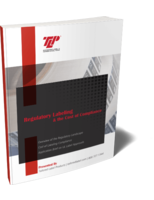Transmitter offers 7 different sonar transducer frequencies.
Press Release Summary:
Reflecting signals as large as 2,500 mV, ORCA Sonar Series Interface level transmitter enables users to select appropriate frequency according to density of interface that is being controlled and monitored. Blanket and Fluff Layer interfaces are monitored within secondary clarifier at respective densities of 4 g/L and 600 mg/L. Unit can also continue to control RAS Blanket density at bottom of tank when secondary clarifier has bulking and settling problems.
Original Press Release:
Hawk Measurement Offers Third Generation Sonar Technology
12/17/2007
Middleton, MA - Hawk Measurement, a leading global provider of level, positioning and flow measurement technology, offers the new ORCA Sonar Series Interface level transmitter, a "third generation" sonar application. There are two major deciphering factors between all the existing "first generation" sonar technology and Hawk's "third generation" ORCA Sonar Series. The first difference involves the number of sonar transducer frequencies employed by each generation of technology, and the second difference deals with the algorithms that control sonar interfaces the scum-cleaning capabilities.
All existing sonar transmitter technologies utilize only one sonar transducer frequency, and are thus severely limited as to where they can be successfully employed. The ORCA Sonar Series' third generation Sonar range offers seven different sonar transducer frequencies, so the appropriate frequency can be selected according to the density of the interface that is being controlled and monitored.
In essence, rather than reflecting small signals of 300 millivolts off the desired density interface, the ORCA range reflects signals as large as 2500 millivolts because of its optimization of the sonar transducer frequency. Additionally, the instrument can continue to control the RAS Blanket density at the bottom of the tank when the secondary clarifier has bulking and settling problems. It is only the lighter densities that are hydraulically lifted towards the launders at the top of the tank. Therefore, a different sonar transducer frequency is used for each of the main applications at a wastewater treatment plant: Primary Sedimentation Tanks, Secondary/Final Clarifiers, Thickeners, and DAF Tanks.
The RAS Blanket and Fluff Layer are two interfaces that must be monitored within the Secondary Clarifier to optimize the efficiency of the tank. They are monitored at respective densities of 4g/L and 600mg/L. The Secondary Clarifier can suffer from stratified interfaces when process stability is lost, which can trick first generation sonar transmitters into believing that the interface is higher in the tank than it really is. The ORCA Sonar Series' algorithms solve this problem by concealing the stratified interface from detection.
Some Secondary Clarifier tanks suffer comparatively from hydraulic imbalance to their inflow, which causes a change in the settling and monitoring of the interfaces. The ORCA can handle this problem with the minimum calibration change, which is all the more reason that each Secondary Clarifier Tank should be treated as a sole stand-alone process tank.
The ORCA transmitter also controls a range of scum cleaners that are an absolute necessity to the ORCA's performance warranty. There is no other known instrument that can survive immersed in sewage media and work reliably without cleaning. The ORCA's industrial scum-cleaning mechanisms require virtually no maintenance and ensure that the transducers are continually cleaned in the most effective manner on the market.
SOURCE: Hawk Measurement




